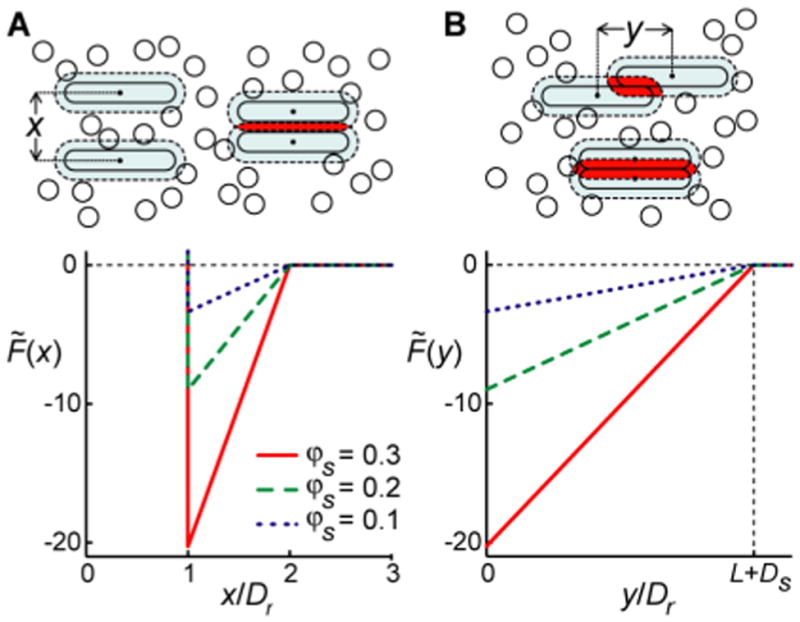Fig. 1.

Attractive depletion interactions between hard rods in the presence of sphere crowders favor rod binding and suppress rod slip. Diagrams depict the area that rods exclude from spheres (dashed regions) and excluded area overlap (shaded regions) when two rods are less than one sphere diameter apart, shown for rod “binding” (A) and rod “slip” (B). The amount of excluded area overlap depends on mutual rod positions and adds to the free area of spheres, thereby increasing sphere entropy. With sufficient sphere density, the subsequent gain in sphere entropy can offset the loss in rod translational entropy, causing rod binding. The graphs show the scaled Helmholtz free energy F̃ = FU/ kT between two hard rods immersed in a sea of hard spheres, as derived from the modified Asakura-Oosawa (AO) depletion interaction theory (see text). The free energy is shown as a function of the relative separation x and mutual “slip” y (as defined in respective diagrams) for various sphere area fractions φs, where Dr=Ds=1 and L = 20.
